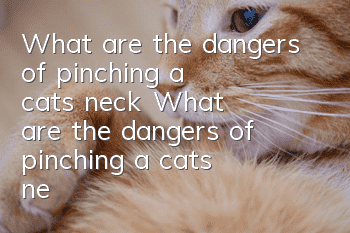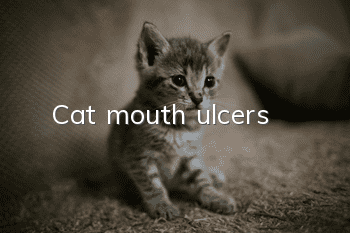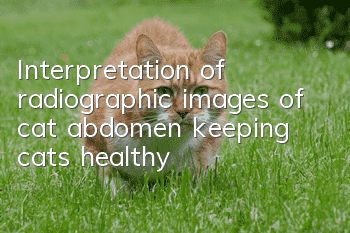Can cats with nasal congestion be cured? Treatment and prevention of nasal obstruction in cats!

Cat nasal bronchitis will produce respiratory symptoms
Can cats with cat nasal bronchitis be cured? Treatment and prevention of cat nasal bronchitis! Feline nasal bronchitis is also called viral rhinotracheitis, because it It is contagious, so it is also called feline infectious rhinobronchitis. It has typical symptoms of respiratory diseases. The infection rate for young cats is very high, and the fatality rate is also very high, especially after a young cat in the cat farm is infected. It will cause the entire cat farm to be infected with the virus. Customers who come to buy cats will buy the infected cats, causing the virus to spread further outside, so domestic cats will also be infected with the virus. Therefore, the prevention and treatment of nasal branch in cats is particularly important.
FHV-1 is widely distributed in the world. The disease is mainly transmitted through contact. The virus is excreted through nasal, eye, and oral secretions. Sick cats and healthy cats are infected through direct nose-to-nose contact and inhalation of virus-containing substances. Respiratory tract infection via droplets. In still air, droplet transmission can occur within 1 meter. Cats that recover naturally can carry and shed viruses for a long time and become dangerous sources of infection. Cats in the early stages of the disease can detoxify through secretions for up to 14 days.
1. Symptoms
The main areas where the virus grows and invades are the nose, sinuses, eyes, palate, tongue, throat, tonsils and upper trachea. Cats will develop severe sneezing symptoms 1 to 3 days after being infected, and then gradually become lethargic, have a fever, have a severe loss of appetite, and even stop eating. The nose will initially flow with clear nasal water, just like when a person has a cold. The same, and then gradually the nasal discharge becomes thicker and thicker like snot; tears flow, and the conjunctiva (i.e., the white of the eye) becomes red and swollen, so severe that the eyes cannot be opened. Some cats may also develop corneal ulcers; some cats may develop corneal ulcers. Drooling and ulcers appear in the mouth; as the disease progresses, cough and even pneumonia symptoms may occur. These symptoms usually last 7 to 14 days. The severity of the symptoms is usually related to the number of viruses infecting the cat. The greater the number, the more obvious and severe the symptoms are. In addition, it is also related to the following factors: the age of the cat, the age of the cat, and the severity of the symptoms. Younger or older cats are more susceptible to virus attacks, and the more serious their condition will be; nutrition, the better the nutrition, the better the resistance, and the stronger the ability to fight the virus; stress, the resistance of cats in a stressed state The strength of the cat will decrease, so the sick cat must be given a quiet and comfortable environment; if it is complicated by other diseases, when the cat suffers from other diseases at the same time, its resistance to the virus will be relatively weak, so the symptoms will be more serious.
2. Diagnosis
Anatomy: The nasal cavity is filled with purulent secretions, and the nasal mucosa is congested and edematous. There was purulent secretion in the throat, the tracheal mucosa was slightly congested, and there was a large amount of purulent secretion on the surface. The lungs changed from pink to red, and there were varying degrees of congestion and necrosis in the left and right lungs, as well as a small amount of bleeding. The liver was dark purple with a small amount of bleeding spots and a necrotic spot the size of a pinhead. There was punctate bleeding in the spleen. The kidneys were mildly edematous and the bladder was filled with light yellow urine. ?
Laboratory diagnosis: Suspected viral rhinorrhea through symptomsTracheitis, and then the venous blood and eye and nasal secretions of the sick cat were collected for PCR testing. The result was a strong positive reaction for rhinotracheitis virus.
3. Treatment
When kittens suffer from this disease, the systemic symptoms are more severe, generally manifesting as severe dehydration, fever, inability to eat, conjunctivitis and Rhinotracheitis. The principle of treatment is to control secondary infection, and supportive therapy with infusion is extremely important. It is necessary not only to replenish sufficient water and ions, but also to replenish energy and nutrients. In addition, there is a kind of arginine called "Mao'an" that can very well hinder virus replication in the early stages of the disease and has a certain curative effect. Kittens have a long course of disease after getting sick, and it usually takes about 1 month to recover. For the treatment of conjunctivitis, if there is no corneal ulcer, the effect of using antibiotic eye drops containing hormones will be obvious. For severe cases of conjunctival edema, hypertonic glucose solution can be dropped into the eye to reduce swelling. Even after the symptoms have basically improved, you must continue taking the medication for about 2 weeks, otherwise the condition will easily worsen.
1. Symptomatic treatment
① Use intranasal drip of vasoconstrictor drugs, such as 0.25% epinephrine hydrochloride, to reduce the amount of serous mucus secreted in the nasal cavity, but it is not suitable for patients with mucus and pus. Sick cat with sexual discharge.
② Corneal ulcers caused by nasal branches can be treated with antiviral eye drops, such as trifluridine or apreclovir eye drops, and antibiotic eye drops are used alternately.
③ For cats with oral damage and long course of disease, vitamin A can be administered orally or intramuscularly, and broad-spectrum antibiotics can be used to prevent secondary infections. Ankapenicillin is preferred, intramuscularly or orally.
2. Traditional Chinese Medicine Therapy
If the cat is sick due to negligence in epidemic prevention, traditional Chinese medicine can also be used to treat it. ?
Prescription: 20g Codonopsis pilosula, 20g Astragalus, 15g Schisandra chinensis, 20g Scutellaria baicalensis, 20g Gardenia, 1g Bupleurum, 15g honeysuckle, 25g Forsythia suspensa, 10g Fangfeng, 15g Plantago, 10g licorice, water Decoct twice, 25 minutes each time. Combine the two decoctions to make about 300ml. Each cat should be fed 5ml twice a day.
4. Prevention and treatment
The focus should be on prevention. Since this disease is common, many adult cats carry specific antibodies. Kittens between 3 and 8 years old Immunity can be acquired through colostrum every week. Therefore, feline viral rhinotracheitis can be prevented by injecting the feline triple vaccine, which is also the safest and most effective method to prevent this disease. In addition, the place where cats live must have a good ventilation environment. If the place is not large enough, try not to keep too many cats. When suspected sick cats are found, they must be isolated and disinfected in time to prevent contact transmission. The cats must also be fed Nutritious foods to boost their ability to fight off viruses.
- What should I do if I am scratched by a cat? How to deal with a scratch by a cat!
- The cat bites the toy and keeps meowing
- How to train a cat not to jump on the bed?
- Why does the cat have a big belly?
- Why does cat ringworm turn black?
- How to stimulate cats to urinate?
- Can kittens be exposed to catnip?
- The most complete cat age deal and attention issues!
- Six tips to help you choose an excellent Russian Blue cat
- How to tell if a cat has dystocia



